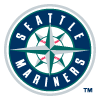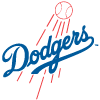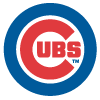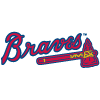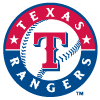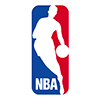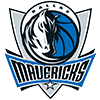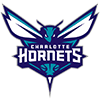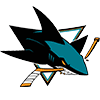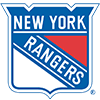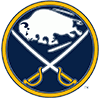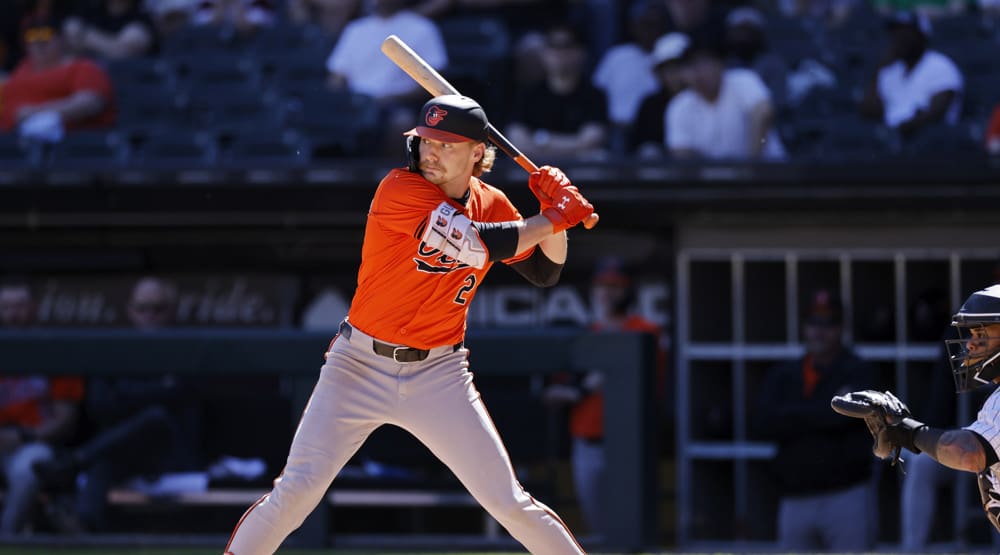Roster building is a skill encompassing many elements. There's knowing the player pool inside and out. There's blending your own rankings with a market awareness. There's having an understanding for what it takes to compete in the specific format. There's keeping a keen eye on what your competitors are doing to shift the supply and demand balance in your favor.
Most of these entail working your butt off. Some are facilitated with help from a fantasy analyst. This is hard to explain, but I'm convinced there's a sixth sense involved, going beyond blood, sweat and tears. Some simply possess an innate knack for building a competitive lineup. Yes, it's rooted in tangibles, but there's an ethereal aspect. Quite frankly, not everyone exhibits this abstract ability (does the "this guy" thumb point).
Roster construction has been a common theme in this space as we all practice excruciating patience, hoping MLB and the MLBPA can come to an agreement and salvage the 2020 campaign. Between the dissection of the 2019 NFBC Main Event and studying the series of retro drafts we've been running for the past month, I say with more resolve than ever, projections and rankings/bid prices are secondary to what is done with them.
Saying and doing are two separate entities, though. As I suggested, I'm not afraid to admit optimal roster building is a personal weakness. That said, I feel the fairest characterization of my game play is that it's inconsistent, as opposed to completely lacking. There are times
Roster building is a skill encompassing many elements. There's knowing the player pool inside and out. There's blending your own rankings with a market awareness. There's having an understanding for what it takes to compete in the specific format. There's keeping a keen eye on what your competitors are doing to shift the supply and demand balance in your favor.
Most of these entail working your butt off. Some are facilitated with help from a fantasy analyst. This is hard to explain, but I'm convinced there's a sixth sense involved, going beyond blood, sweat and tears. Some simply possess an innate knack for building a competitive lineup. Yes, it's rooted in tangibles, but there's an ethereal aspect. Quite frankly, not everyone exhibits this abstract ability (does the "this guy" thumb point).
Roster construction has been a common theme in this space as we all practice excruciating patience, hoping MLB and the MLBPA can come to an agreement and salvage the 2020 campaign. Between the dissection of the 2019 NFBC Main Event and studying the series of retro drafts we've been running for the past month, I say with more resolve than ever, projections and rankings/bid prices are secondary to what is done with them.
Saying and doing are two separate entities, though. As I suggested, I'm not afraid to admit optimal roster building is a personal weakness. That said, I feel the fairest characterization of my game play is that it's inconsistent, as opposed to completely lacking. There are times I'm too confident in/reliant upon my projections, and eschew a lower-ranked player and his inferior "value in a vacuum."
Knowing when to favor team construction over pure stats is part sixth sense, part next-level analysis. The latter will be the focus in this installment of the Winning Tendencies series.
A couple things caught my attention in Winning Tendencies, Part Four. Specifically, teams did much better drafting Gerrit Cole over Justin Verlander, and despite finishing as the top two end-of-season hitters, teams with Ronald Acuna and Christian Yelich fared much worse than expected.
To study these scenarios and ones like them, I calculated the average team totals for the 38 Main Event clubs drafting each player. Each was then considered the 571st team in the 2019 Main Event and ranked accordingly. Before looking at specifics, here's a table displaying where a number of players finished. The pool consists of the top-15 picks according to ADP, the 15 most valuable based on adjusted earnings as presented in Winning Tendencies, Part Two, and the top 15 based on where their teams finished in the overall, as described in Winning Tendencies, Part Four. Accounting for duplicates, 36 players comprise the sample.
BA | HR | RUNS | RBI | SB | W | SV | K | ERA | WHIP | PTS | RANK | |
|---|---|---|---|---|---|---|---|---|---|---|---|---|
| Gerrit Cole | 221 | 284 | 294 | 279 | 295 | 445 | 333 | 494 | 476 | 470 | 3591 | 126 |
| Rafael Devers | 436 | 346 | 413 | 459 | 412 | 293 | 266 | 299 | 293 | 313 | 3530 | 140 |
| Ketel Marte | 387 | 339 | 314 | 369 | 386 | 334 | 325 | 345 | 344 | 381 | 3524 | 142 |
| Luke Weaver | 387 | 397 | 387 | 374 | 344 | 230 | 299 | 321 | 360 | 369 | 3468 | 153 |
| Justin Verlander | 221 | 264 | 281 | 280 | 253 | 484 | 284 | 452 | 447 | 485 | 3451 | 156 |
| Charlie Morton | 352 | 317 | 355 | 317 | 308 | 370 | 303 | 311 | 423 | 373 | 3429 | 160 |
| Michael Conforto | 324 | 370 | 374 | 340 | 321 | 370 | 255 | 369 | 336 | 371 | 3430 | 160 |
| Domingo German | 252 | 339 | 303 | 313 | 344 | 461 | 284 | 330 | 378 | 417 | 3421 | 161 |
| Pete Alonso | 285 | 465 | 397 | 378 | 295 | 334 | 255 | 314 | 323 | 352 | 3398 | 165 |
| Shane Bieber | 252 | 304 | 285 | 257 | 321 | 370 | 284 | 468 | 420 | 433 | 3394 | 165 |
| Matt Olson | 324 | 367 | 357 | 320 | 262 | 370 | 277 | 321 | 391 | 381 | 3370 | 169 |
| Josh Bell | 387 | 435 | 454 | 427 | 344 | 256 | 246 | 295 | 238 | 269 | 3351 | 172 |
| Willson Contreras | 324 | 376 | 336 | 341 | 334 | 313 | 325 | 341 | 313 | 328 | 3331 | 176 |
| Cody Bellinger | 387 | 367 | 344 | 351 | 386 | 313 | 284 | 311 | 259 | 301 | 3303 | 183 |
| Jonathan Villar | 352 | 367 | 349 | 378 | 468 | 256 | 229 | 272 | 287 | 295 | 3253 | 194 |
| Trey Mancini | 387 | 376 | 399 | 369 | 295 | 276 | 277 | 300 | 280 | 289 | 3248 | 194 |
| Hyun-Jin Ryu | 190 | 276 | 263 | 281 | 321 | 370 | 325 | 289 | 476 | 433 | 3224 | 205 |
| Jorge Soler | 252 | 449 | 441 | 354 | 321 | 276 | 266 | 263 | 304 | 285 | 3211 | 211 |
| Mike Clevinger | 221 | 296 | 284 | 271 | 266 | 395 | 303 | 345 | 415 | 406 | 3202 | 212 |
| Elvis Andrus | 285 | 250 | 291 | 280 | 472 | 355 | 246 | 335 | 346 | 313 | 3173 | 217 |
| Marcus Semien | 285 | 360 | 381 | 391 | 266 | 276 | 387 | 272 | 242 | 257 | 3117 | 227 |
| Ronald Acuna | 285 | 339 | 325 | 325 | 468 | 276 | 303 | 261 | 254 | 267 | 3103 | 230 |
| Jacob deGrom | 252 | 259 | 296 | 320 | 354 | 215 | 277 | 332 | 399 | 390 | 3094 | 233 |
| Trea Turner | 252 | 310 | 298 | 320 | 354 | 355 | 277 | 284 | 282 | 289 | 3021 | 252 |
| Nolan Arenado | 411 | 304 | 322 | 306 | 275 | 256 | 240 | 242 | 283 | 254 | 2893 | 281 |
| Alex Bregman | 352 | 276 | 294 | 271 | 183 | 256 | 299 | 241 | 340 | 324 | 2836 | 294 |
| Christian Yelich | 387 | 317 | 267 | 246 | 447 | 293 | 179 | 242 | 223 | 222 | 2823 | 297 |
| DJ LeMahieu | 436 | 310 | 325 | 336 | 215 | 205 | 266 | 199 | 242 | 257 | 2791 | 303 |
| Mike Trout | 324 | 400 | 366 | 354 | 183 | 215 | 277 | 186 | 193 | 211 | 2709 | 318 |
| J.D. Martinez | 285 | 334 | 355 | 287 | 183 | 276 | 284 | 284 | 208 | 217 | 2713 | 318 |
| Aaron Judge | 252 | 259 | 190 | 222 | 232 | 355 | 219 | 288 | 332 | 340 | 2689 | 328 |
| Anthony Rendon | 252 | 259 | 190 | 222 | 232 | 355 | 219 | 288 | 332 | 340 | 2689 | 328 |
| Jose Ramirez | 190 | 222 | 252 | 178 | 321 | 313 | 325 | 249 | 302 | 320 | 2672 | 334 |
| Mookie Betts | 324 | 265 | 255 | 340 | 308 | 205 | 266 | 213 | 197 | 254 | 2627 | 348 |
| Chris Sale | 221 | 229 | 249 | 178 | 262 | 205 | 354 | 314 | 234 | 337 | 2583 | 356 |
| Max Scherzer | 221 | 211 | 210 | 210 | 180 | 256 | 246 | 314 | 359 | 343 | 2550 | 363 |
Please note, these are not the top-36 players, simply ones that offer an interesting perspective. Let's focus on some intriguing pairs, hoping to glean something by way of optimal lineup construct.
Here are the average category totals for the Cole and Verlander teams.
BA | HR | R | RBI | SB | W | SV | K | ERA | WHIP | |
|---|---|---|---|---|---|---|---|---|---|---|
| Justin Verlander | 0.261 | 324.1 | 1082.0 | 1035.5 | 103.0 | 97.0 | 56.1 | 1473.7 | 3.86 | 1.19 |
| Gerrit Cole | 0.261 | 328.6 | 1080.8 | 1040.9 | 108.4 | 93.2 | 61.2 | 1504.5 | 3.81 | 1.19 |
Verlander's ADP was 16, two spots before Cole, while Verlander earned $43 compared to $40 for his 2019 teammate. The curious part is Cole was on seven league winners while Verlander was drafted by just three champions. Let's look at the rankings for the hitting and pitching category totals separately.
BA | HR | RUNS | RBI | SB | HIT | |
|---|---|---|---|---|---|---|
| Gerrit Cole | 221 | 284 | 294 | 279 | 295 | 1373 |
| Justin Verlander | 221 | 264 | 281 | 280 | 253 | 1299 |
The extra 4.5 homers from Cole's teams earned 20 more categorical points in the overall, but the big difference is 5.4 steals resulting in a 42-point edge. Perhaps getting their first-round pick two spots earlier on average accounts for the difference, but that is a matter of optimal KDS, not roster building.
W | SV | K | ERA | WHIP | PTS | TOTAL | |
|---|---|---|---|---|---|---|---|
| Gerrit Cole | 445 | 333 | 494 | 476 | 470 | 3591 | 2218 |
| Justin Verlander | 484 | 284 | 452 | 447 | 485 | 3451 | 2152 |
The pitching points align with their respective contributions, except for saves. Despite Verlander's better numbers resulting in less success, the bottom-line difference appears to be happenstance. That is, there's nothing about Cole's line, such as the extra whiffs, that manifested directly in his teams garnering more steals and saves.
Let's shift the focus to Acuna and Yelich, not so much to compare, but rather to understand why teams rostering the two top fantasy hitters from last season finished with an average ranking of 230 and 297, respectively, in the Main Event. Here are their aggregate category totals:
BA | HR | R | RBI | SB | W | SV | K | ERA | WHIP | |
|---|---|---|---|---|---|---|---|---|---|---|
| Ronald Acuna | 0.262 | 336.4 | 1097.7 | 1053.4 | 126.4 | 84.6 | 58.5 | 1363.3 | 4.15 | 1.26 |
| Christian Yelich | 0.265 | 333.1 | 1065.9 | 1030.3 | 124.8 | 85.3 | 46.8 | 1349.9 | 4.18 | 1.27 |
By means of perspective, Acuna's ADP was 8, a spot after Yelich, while the Braves' outfielder earned $46 to $44 for his Brewers counterpart. With such close vitals, it's no surprise their associated average teams are so close.
Here's the category points for each player, beginning with pitching.
W | SV | K | ERA | WHIP | TOTAL | |
| Ronald Acuna | 276 | 303 | 261 | 254 | 267 | 1361 |
| Christian Yelich | 293 | 179 | 242 | 223 | 222 | 1159 |
Most of this is just dumb luck, especially the delta in saves. Still, it's telling that on the average, teams with these two hitting studs couldn't assemble even an average pitching staff (285 points is the midpoint of each category). What does the hitting data tell us?
BA | HR | RUNS | RBI | SB | TOTAL | |
| Ronald Acuna | 285 | 339 | 325 | 325 | 468 | 1742 |
| Christian Yelich | 387 | 317 | 267 | 246 | 447 | 1664 |
By means of reminder, here are their 2019 roto stats:
BA | HR | RUNS | RBI | SB | |
|---|---|---|---|---|---|
| Ronald Acuna | 0.280 | 41 | 127 | 101 | 37 |
| Christian Yelich | 0.329 | 44 | 100 | 97 | 30 |
Acuna's category totals are higher, but keep in mind Yelich only played 130 games. The more relevant observation pertains to steals. It makes sense both aggregate teams fared well in the category considering the excellent contribution from each individual. That said, toggle up to the table displaying the category totals for the 36 chosen players and eyeball the stolen base column.
Rafael Devers, in the two-hole, is the only other player in the top 14 whose average team garnered more than 400 points in steals, and it certainly wasn't a result of his modest eight swipes. Meanwhile, both Acuna's and Yelich's aggregate teams finished in the mid-400s. In a vacuum, this is beneficial, but the big-picture results suggest those clubs amassed too many pilfers.
This is an inefficient use of resources. Somewhere along the line, perhaps on multiple occasions, fantasy managers selecting Acuna and Yelich should have bypassed another stolen base contributor and fortified pitching or the other hitting counting stats, a great example of optimal roster building.
This line of thinking can be extended to all early picks expected to be a strong steals contributor. Some may frame this as an anti-Trea Turner argument, contending his steals aren't needed to win. As someone still hoping to defend my 2019 TGFBI championship featuring Trea Turner as my first-round pick, that's a myopic approach. It takes extra focus on power, and an assist from Lady Luck (hello, Marcus Semien and Yuli Gurriel), but a Turner-led team can get it done.
Another possible conclusion is Mike Trout could be a better pick than Acuna or Yelich. Clouding this argument is the health risks, but if you rank all three equally, using the steals narrative as a tiebreaker makes sense. That said, if you rank Acuna or Yelich appreciably higher than Trout, roster construction isn't a palatable reason to opt for Trout. The entire rest of the draft is there to amass ample counting stats, especially with an inherent leg up in steals.
Followers of this series know the randomness of saves, and focusing less on the singular nature of steals have been common themes. The approach utilized herein serves to hammer home these aspects of roster building.
It also opens the door for other studies. A couple I have in mind include examining the aggregate category totals for teams that drafted multiple aces early and those that eschewed stud arms for at least three rounds. I'd like to open the floor for suggestions, with the caveat I selfishly hope to backburner the requests to the winter, in lieu of transitioning to 2020 analysis. In addition, I've captured all 570 Main Event final rosters with the intent of gauging the in-season management strategies of the more successful teams.








